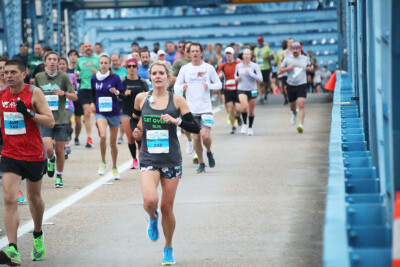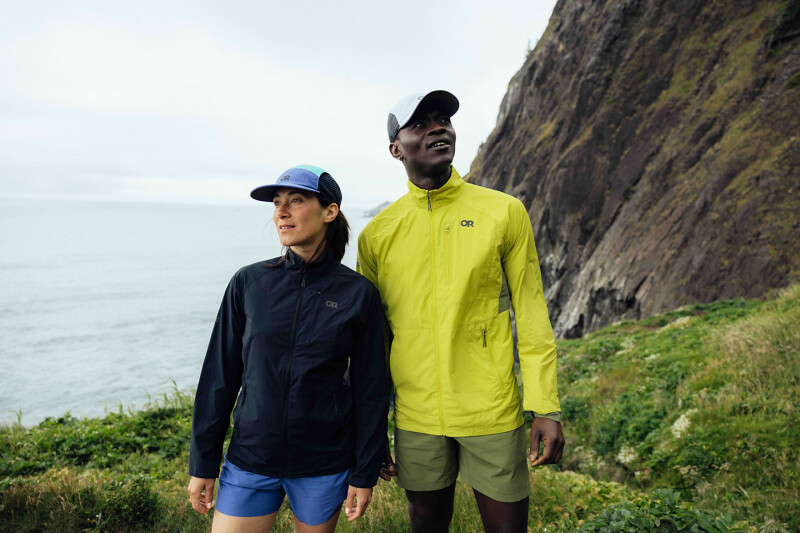To say the last year has been an interesting one for run specialty retailers and their vendors would certainly be an understatement. The U.S. consumer has struggled to define new ways to live their lives throughout the COVID-19 pandemic. Many have changed their fundamental behaviors around work, living and fitness, placing unique stress on retailers to rapidly adjust merchandising, product inventories and selling strategies.
Number one among them is the shift, perhaps permanent, to online shopping.
Think back to March and April 2020, a time when many run specialty retailers indeed, most “non-essential” retailers found their brick-and-mortar doors temporarily closed, forcing consumers to shop for necessities online, a shift that NPD data indicates will remain at some level. From March 2020 through February 2021, NPD’s Retail Tracking Service reported a 73 percent average monthly sales growth in the Sport Specialty E-commerce Retail Channel, an aggregate of online retailers and traditional brick-and-mortar retailers that report their online sales to NPD.
This is over three times the growth that occurred in 2019 and is likely a lasting change by consumers towards retailers that provide online sales mechanisms.
Throughout 2020, consumers not only had to change the way in which they purchased goods and services, they were also challenged to reinvent their daily routines, like finding themselves cooking at home more and working/learning in new and different ways. One of the more dramatic shifts that occurred in 2020 was the way the U.S. consumer adapted to new fitness and exercise routines including running.
Consumers Reinventing Retail
Americans had to get creative as gyms and fitness centers in the U.S. were either closed or operating under significant capacity restrictions. And with many more Americans working from home with time to focus on new activities, the outcome has been a surge in the purchase of equipment to participate in home fitness, cycling, running and activities such as golf and racquet sports that provide socially distanced outlets for consumers to exercise.
In the months from June 2020 to March 2021, sales across NPD’s total tracked market of at-home exercise equipment, including weights, treadmills and stationary bikes, increased 78 percent in dollars from the same timeframe during the prior year. Sales of golf equipment increased 76 percent and racquet sports equipment increased 41 percent. And in the nine months from June 2020 through February 2021, cycling equipment sales were up 50 percent.
The surge in sales at retail corresponds to participation trends noted by the Outdoor Industry Association’s special report “The New Outdoor Participant, 2021 Special Report,” in which they noted a 58 percent increase in new participation in walking and a 28 percent increase in new participation in running/jogging outside in 2020.
This finding aligns with insights from NPD’s Trend Tracker report, in which consumers reported planning to participate in walking/hiking 48 percent more as an activity in 2021 than they did in the prior year and run 10 percent more as an activity.
This strong interest in new activities is translating into running and walking shoe sales. In the last 10 months (June 2020 through March 2021), sales of both walking and running shoes have increased just shy of 10 percent for the total measured market.
Charting a Path To Success
This data points to a few critical considerations as running specialty retailers chart a path to success in a post-COVID-19 environment. The first consideration is how to generate even more sales based on the interest levels in new activities outlined in both the consumption of new health and fitness products as well as in survey information.
One opportunity for retailers is to close the gap in sales performance between the strong equipment sales noted and that of running/walking footwear. While consumers may have felt a need to prioritize the purchase of needed and not-yet-owned fitness, outdoor and cycling equipment, that behavior was less evident in NPD’s sales data for running/walking shoes. The opportunity to message to the newer runner and engaged walker as to the benefits of a new shoe and apparel investments is compelling.
With an uncertain race calendar for 2021, marketing and merchandising investments can be made by reallocating budget typically reserved for race support. Simple efforts, such as hosting staff workshops on how to sell to new runners and walkers, can pay real dividends.
One specialty independent running store we recently visited has pivoted much of its attention to the new runner. Now hosting a “new running” group run each week, the format is a lower-mileage run with a focus on mobility, form and other basic skills that more established runners may not want or need to prioritize in their group runs. The store also has an online scheduling tool for new shoe fitting that notes the level of the runner.
This store’s owner uses this information to assign the right staff member to work with each customer and to manage the number of consumers in the store at a given time. These basic steps have generated store loyalty and incremental sales to a new primed-to-spend audience.
The owner of the store also noted a strong interest by parents in having their middle school and high school children start track-and-field and cross-country running as a sport, mostly because these activities occur outdoors where social distancing can be maintained.
This retailer recognized the longer-term benefits of creating more support for another type of new consumer the young athlete. The owner noted there was a large overall “sales basket” when serving the high school athlete. In addition to purchasing shoes, add-on sales were robust, and parents also tended to purchase while in store.
A second opportunity for retailers and vendors/manufacturers is in the frequency and types of communications that are occurring. Demand for sporting goods products is uncertain as consumer behavior changes surrounding returns to work, vaccinations and even gym reopenings.
This uncertainty places stress on forecasting and managing inventory. Accuracy in understanding the market and the needs for product at retail will translate to better profits for the retailers and suppliers alike. Creating opportunities to discuss market observations, review sales data and define a mutual path to success is required in this uncertain time.
Dirk Sorenson is Executive Director, Industry Analyst Sports, The NPD Group
Source: The NPD Group, Retail Tracking Service. Unless otherwise noted.






